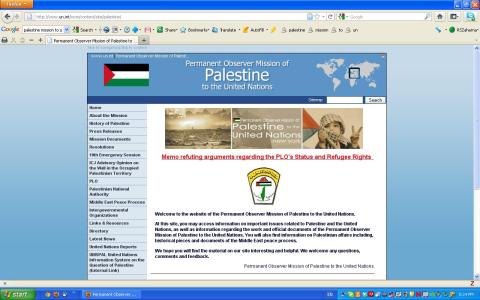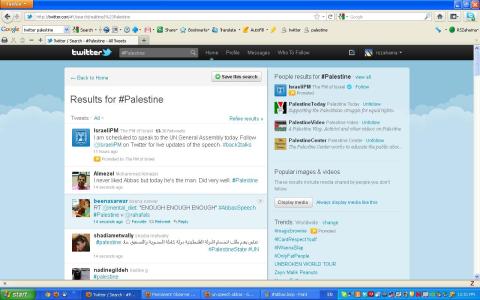Conspicuous by Their Absence
September 25, 2011 § Leave a comment
As I mentioned earlier, there was a lot of PDing at the United Nations this week, especially on the Palestinian-Israeli conflict. However, despite all the action I was surprised by a couple of rather glaring absences in all the activities. Three glaring oversights stood out.
Diplomatically, despite the historic nature of the Palestinian bid, there were no surprises. The Palestinians sought to return the “Question of Palestine” to its original roots in the United Nations and tap into its broad support in the international community. Israelis sought to distance the conflict from the international forum and stressed direct negations where it holds the upper hand in an asymmetrical power dynamic. Both parties quite naturally want to play to their strength in the diplomatic maneuvering.
In terms of public diplomacy, in such a high visibility, adversarial context, assertive public diplomacy that focuses on strong, direct, and clear messaging strategies would be the approach of choice.
Both parties took advantage at their turn at the podium to present their position, the best of assertive public diplomacy. However, both parties did not transfer that offline momentum to an online forum. In fact one of the parties seemed to be missing a digital strategy.
Here is the captured screen shot of the Palestine Observer Mission to the United Nations after the Palestinian leader Mahmoud Abbas delivered his speech.
No mention of the events of that day or visuals. No interactive elements to keep or engage visitors engaged. If one clicks on the link, the main focus of the page, the link takes the visitor to a document written “September 2011.”
Below is a captured screen shot of the Israeli Mission to the United Nations. The picture of Benjamin Netanyahu rotates with other visuals acts to simulate movement and action and keeps the visitor engaged with the site.
Politico had reported earlier in the week about the various steps Israel was taking to construct a digital strategy and mobilize the necessary resources to realize that strategy. As an indication of the strength of the digital effort, I ventured over the Twitter sphere.
As an indication of how strong and vigorously that digital strategy was implemented, below is a screen shot just Twitter searches I was conducting during Abbas’ speech. Although I used various search terms, including #Abbas
and #Palestine, and listings methods, the Israeli PM tweet invariably came up on top.
The first conspicuous absence: a Palestinian digital strategy.
Another missing component from the Palestinian strategic diplomatic picture that was conspicuously absent was Gaza. Gaza is complex in terms of the political dynamics all around, but it will need to be incorporated for the Palestinian public diplomacy strategy to be comprehensive.
Despite these two missing pieces, the historical nature of the event still captured headlines of major papers around the world, The New York Times, Wall Street Journal, Le Monde.
The third conspicuous absence was reflect in the actions of an important third party. Since the Palestinians first announced their intention to take their bid for statehood at the U.N., the United States has been vocal in stating the importance it attaches to the conflict. It has been vigorously pushing for direct talks between the two parties. And, it has sought to position itself as the mediator. While the Palestinian application for statehood capture headlines by major newspapers in the United States and around the world, including the New York Times, Le Monde, and the Guardian, the front page of the Washington Post on Saturday was quite remarkable.
Given the rhetoric in Washington, the amount of front page coverage speaks volumes.





